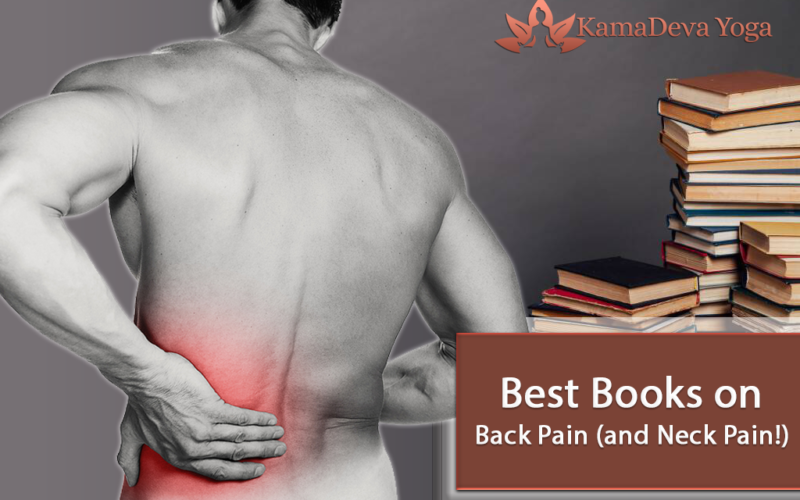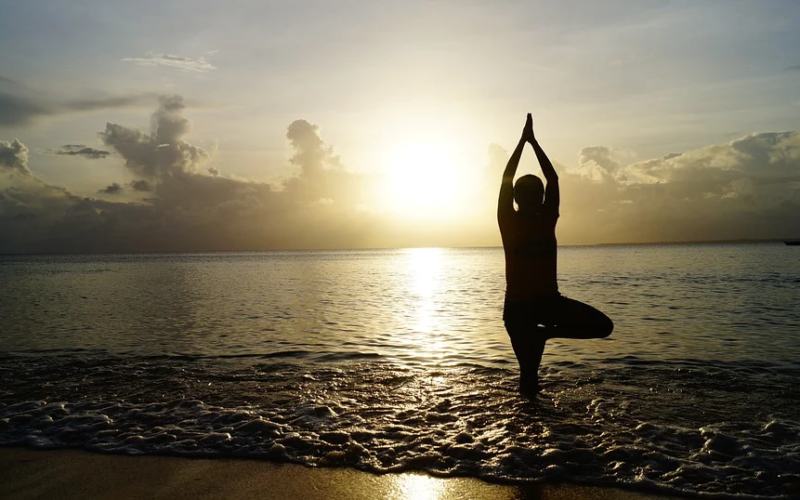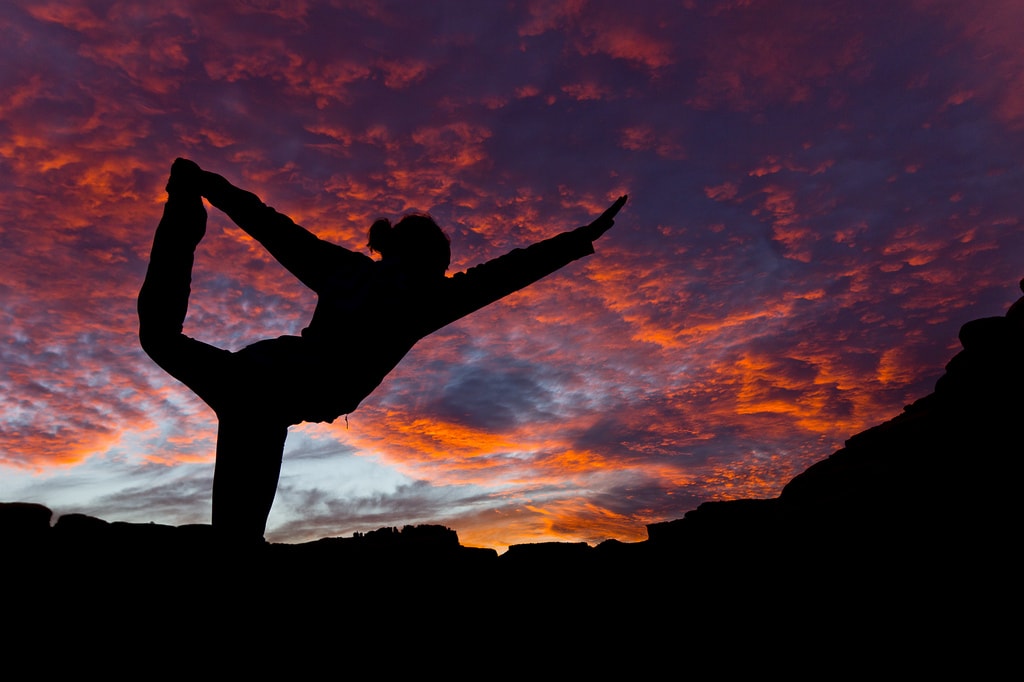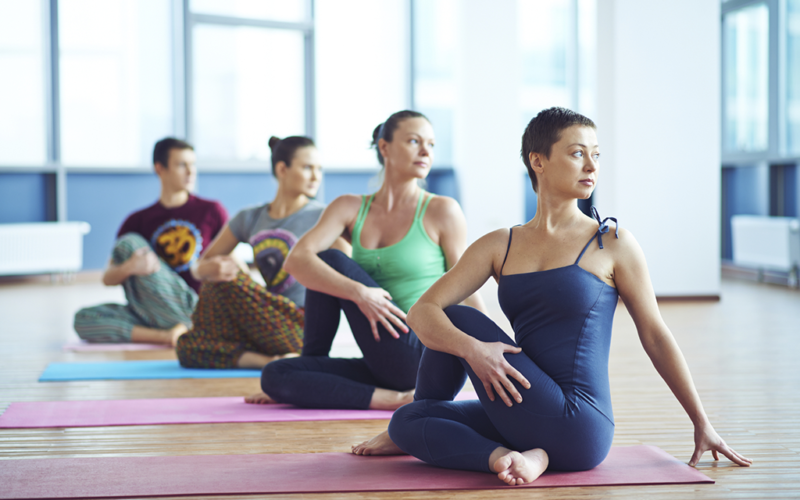Yoga is very beneficial to your physical and mental health. It has the potential to ease stress, relieve anxiety, decrease inflammation, boost heart health, uplift your moods, fight depression, reduce chronic pain, and promote sleep, among other benefits.
Indeed, about 55 million Americans currently practice yoga. And you expect similar figures in other parts of the world as well. (1) (2)
If you want to be part of the millions of yoga practitioners, you must invest in some basic equipment.
Here are the most essential ones you need for an effective session every time:
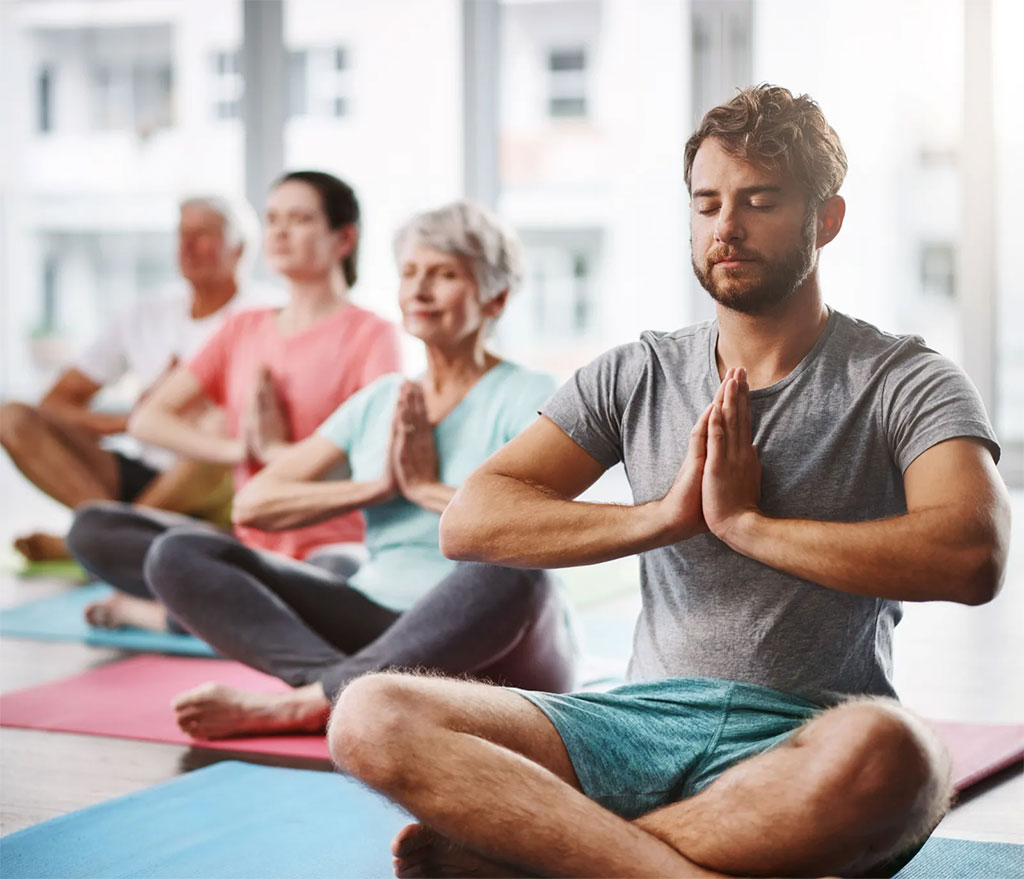
Yoga Mats
This is top on the list as it’s the most fundamental accessory for yoga practice. Yoga mats provide support to your knees, hips, back, and hands as you do the various yoga poses.
For this reason, you’d want one that’s thick enough and well cushioned so your joints don’t end up aching due to the hard ground surface.
Also, yoga mats prevent your feet and hands from slipping during practice. Therefore, go for those with excellent anti-slip properties.
Regarding the look, you’d want a printed design that motivates you to keep going.
In that sense, you can choose either abstract art, seascape, nature, bohemian, or floral designs that match your personality.
Yoga Blocks
Yoga blocks are brick-shaped supports used to assist and modify yoga poses.
Here are some postures that usually require the use of yoga blocks:
- Balasana/Child’s Pose: This is the posture wherein your body falls into a similar position as that of a child in the mother’s womb. As much as it’s restorative and restful, the posture can be challenging for you, and so you may want to use a yoga block to support your forehead rather than having it rest on the ground. You can also place your elbows on the block to deepen the posture without hurting your back.
- Uttanasana: This is also known as the standing head-to-knees pose. With your legs upright, you bend your torso at the hips so that your eyes look directly at your knees and your hands touch the ground. If you find it challenging to bend all the way until you touch the ground, you can consider resting your hands on a yoga block. Alternatively, you can deepen the posture by standing on yoga blocks and resting your hands on the floor. (3)
Yoga Straps
Yoga straps can help you learn alignment, train your body to do the different yoga poses correctly, and help you maintain postures for a longer time.
As you begin practicing yoga, you realize that your core strength might not be sufficient to handle most of the poses. You might also be lacking in balancing skills.
Using a yoga strap teaches your body to pose correctly, allowing you to develop much-needed balance and flexibility.
Consider choosing those with buckles so that you can freely adjust them depending on the pose you’re practicing.
And for ease of cleaning and durability, make a point of purchasing straps made from cotton.
Essential Oil Diffuser
If you’re practicing yoga for stress and anxiety relief, you’d want to couple it up with essential oils, such as lavender and rosemary, that are known to also help alleviate stress.
Research indicates that aromatherapy is thought to have a significant effect on brain waves in such a manner that the scents can alter behavior.
Rosemary, for instance, may help bring feelings of contentment.
On the other hand, lavender is believed to help boost cognitive performance and mood. Peppermint may help in increasing memory and alertness. (4)
To soak in these relaxing scents during your yoga session, you need an essential oil diffuser.
Ultrasonic diffusers are the best as they break down the oils into tiny particles without involving heat. Thus, they’re easier to maintain than oil burners.
Bolsters
Yoga bolsters make most postures more comfortable. You need them to support your body while holding a stretch and thus minimize fatigue and stress in your body.
You can use them for different poses like the deer pose, caterpillar, goddess, bridge, and savasana.
As they come in different sizes, shapes, firmness, and qualities, you’d want to carefully shop for them so that you don’t end up with a bolster you’re not comfortable using.
Takeaway
While some claim that you really don’t need any equipment to hold yoga sessions, you now understand the importance of accessories like yoga mats, blocks, straps, bolsters, and essential oil diffusers.
Other equally critical yoga accessories include blankets, chairs, meditation cushions, chimes, dimmable lighting systems, salt lamps, and sandbags.
Invest in them one by one, and you’ll find your sessions more effective.
References:
- “13 Benefits of Yoga That Are Supported by Science”, Source: https://www.healthline.com/nutrition/13-benefits-of-yoga
- “Number of yoga participants in the United States from 2012 to 2020”, Source: https://www.statista.com/statistics/605355/us-yoga-participation/
- “How to Do Standing Forward Bend (Uttanasana) in Yoga”, Source: https://www.verywellfit.com/standing-forward-bend-uttanasana-3567133
- “Aromatherapy Scents for Stress Relief”, Source: https://www.verywellmind.com/aromatherapy-scents-for-stress-relief-3144599
Ivan Pertti
Latest posts by Ivan Pertti (see all)
- What To Know About The Nicotine Pouch Trend - August 25, 2022
- 7 Reasons Yoga is Good for People Who Work at Desk Jobs - August 25, 2022
- CoolSculpting for Non-Surgical Fat Removal - August 25, 2022


